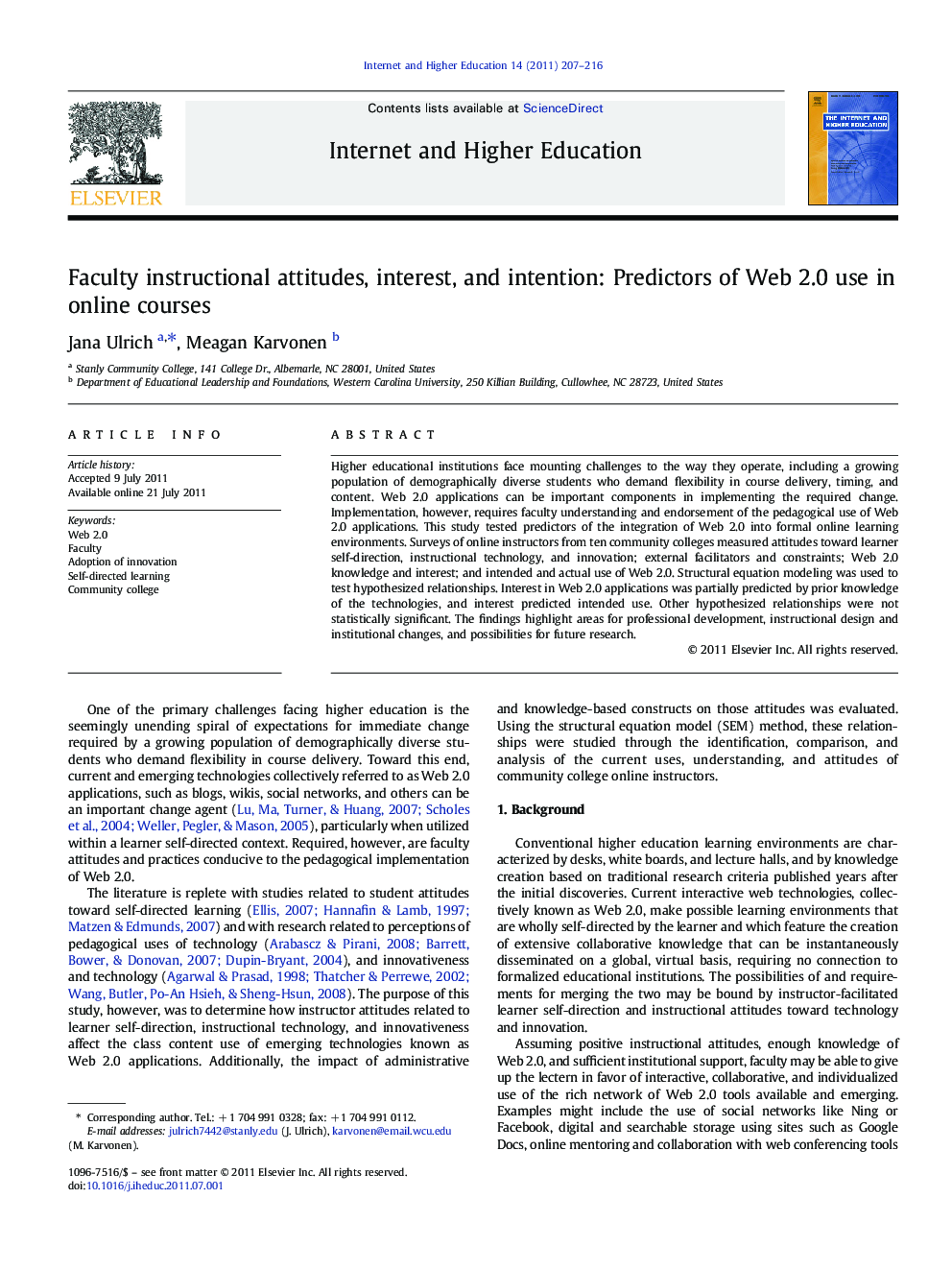| Article ID | Journal | Published Year | Pages | File Type |
|---|---|---|---|---|
| 357865 | The Internet and Higher Education | 2011 | 10 Pages |
Higher educational institutions face mounting challenges to the way they operate, including a growing population of demographically diverse students who demand flexibility in course delivery, timing, and content. Web 2.0 applications can be important components in implementing the required change. Implementation, however, requires faculty understanding and endorsement of the pedagogical use of Web 2.0 applications. This study tested predictors of the integration of Web 2.0 into formal online learning environments. Surveys of online instructors from ten community colleges measured attitudes toward learner self-direction, instructional technology, and innovation; external facilitators and constraints; Web 2.0 knowledge and interest; and intended and actual use of Web 2.0. Structural equation modeling was used to test hypothesized relationships. Interest in Web 2.0 applications was partially predicted by prior knowledge of the technologies, and interest predicted intended use. Other hypothesized relationships were not statistically significant. The findings highlight areas for professional development, instructional design and institutional changes, and possibilities for future research.
► SEM test of predictors of Web 2.0 application integration into online classes. ► Surveyed 285 online community college instructors from ten institutions. ► Prior knowledge of technologies predicted interest in Web 2.0 applications. ► Interest in Web 2.0 applications predicted intended use in online classes. ► Findings highlight areas for change in online class instructional preparation.
